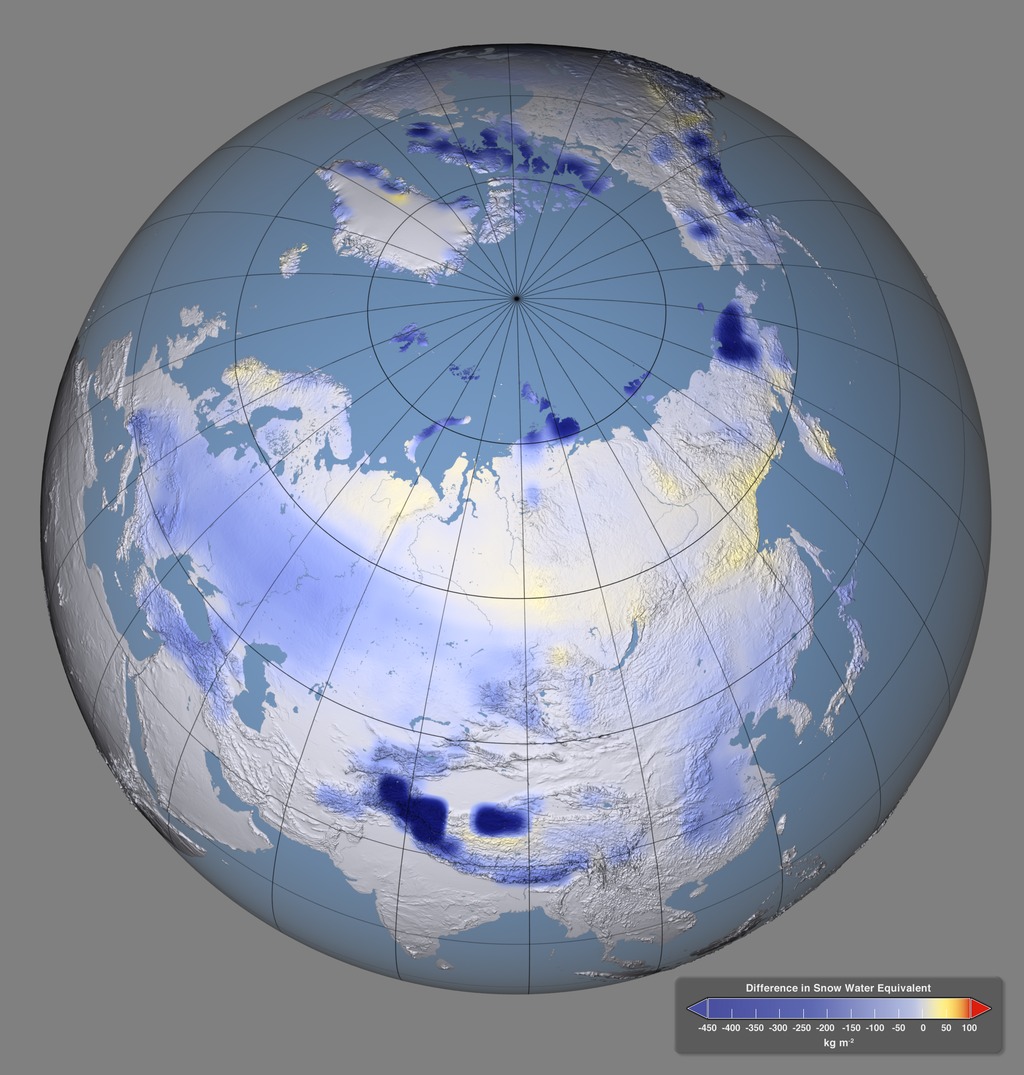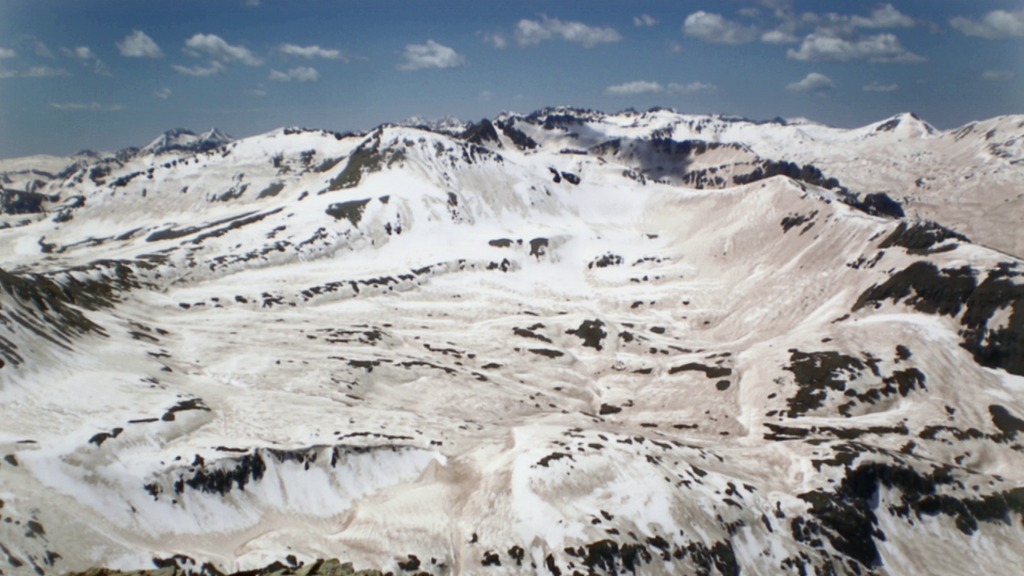The Snow Darkening Effect

Scientists link earlier melting of snow to dark aerosols.
When tiny particles suspended in the air, known as aerosols, land in snow-covered regions, they can darken snow and ice, causing it to absorb more of the sun’s energy. In a new study, NASA scientists used a climate model to examine the impact of this snow-darkening phenomenon on snowpacks in the Northern Hemisphere. Scientists ran simulations for a 10-year period between 2002 and 2011, and compared scenarios with and without the deposition of aerosols on snow. The model showed that areas darkened by aerosols had increased surface warming and reduced snow amounts in spring. The findings suggest natural and manmade aerosols in the atmosphere might play a role in the earlier melting of winter snowpacks. Watch the video to learn more.
In this video, NASA scientist Teppei Yasunari talks about the effect of aerosols on snow and ice in the Northern Hemisphere.

Manmade and natural aerosols, like dust (shown above), are transported by winds and can land in snow-covered regions.

Snow that has become darkened by aerosols absorbs more sunlight, and can cause increased melting of snowpacks during spring.

This map shows modeled changes in spring snow amount due to the deposition of aerosols on snow averaged over 10 years.
Credits
Please give credit for this item to:
NASA's Goddard Space Flight Center
Cover image courtesy of NASA/JPL/Snow Optics Laboratory/S. McKenzie Skiles
Dust image courtesy of University of Washington/Stephen G. Warren
Dark snow image courtesy of Meteorological Research Institute/Teruo Aoki
-
Writer
- Joy Ng (USRA)
-
Scientists
- Teppei J. Yasunari (Hokkaido University)
- Kyu-Myong Kim (NASA/GSFC)
-
Animator
- Cindy Starr (Global Science and Technology, Inc.)
-
Producers
- Kayvon Sharghi (USRA)
- Joy Ng (USRA)
-
Narrator
- Joy Ng (USRA)
-
Interviewee
- Teppei J. Yasunari (Hokkaido University)
-
Support
- Stephen Warren (University of Washington)
- Thomas Painter (NASA/JPL CalTech)
- Jason E. Box (GEUS)
- Peter Sinclair (Dark Snow Project)
- Teruo Aoki (Meteorological Research Institute)
- Randal D. Koster (NASA/GSFC)
Release date
This page was originally published on Tuesday, August 4, 2015.
This page was last updated on Wednesday, May 3, 2023 at 1:49 PM EDT.

